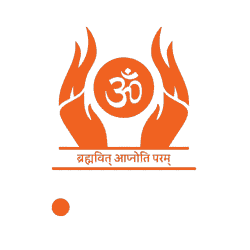The Foreground of Bhagavad Gita dialogue
description

Prabhata Rashmih – The Unique Philosophy of the Bhagavad Gita
The Foreground of Bhagavad Gita dialogue
Swami Bhoomananda Tirtha
Swamiji, in this talk, takes us through the different Yugas and tells us how the human society developed and changed over the passage of time. In the KritaYuga everybody was doing everything in a self-fulfilling manner, without getting provoked, persuaded, compelled or threatened. They found satisfaction in whatever they did, thought or spoke.
From there, things declined in the Treta Yuga. In the Ramayana, relationships and human behaviour were portrayed. In the Dwapara Yuga, the Mahabharata deals with all kinds of crisis, conflicts and contradictions of the human mind and ultimately shows how the human mind has got the potential to outlive everything and still be glorious and successful.
The Mahabharata is a scripture which speaks about facing conflicts and outliving them. It is a scripture where Dharma itself is put to test on various occasions and finally Dharma triumphs. With this kind of a background, the Bhagavad Gita gospel is not a momentary development. It represents the cultural thought process and the outcome of our people. It not only represents the behaviour of man, but also the potential of our mind, the role of the intelligence and the static position of the Soul.
Shlokas chanted in the Track:
आ नो भद्राः क्रतवो यन्तु विश्वतः |
(Rigveda 1.89.1)
Prabhata Rashmih – The Unique Philosophy of the Bhagavad Gita
The Foreground of Bhagavad Gita dialogue
Swami Bhoomananda Tirtha
You Might Be Interested In
Make Sattva Guna Predom...
Make Sattva Guna Predominant in Your Personality
Swami Bhoomananda Tirtha
Bhagavad Gita is a Gosp...
Bhagavad Gita is a Gospel on Life
Swami Bhoomananda Tirtha
What is Doing Everythin...
What is Doing Everything and yet Do Nothing
Swami Bhoomananda Tirtha











